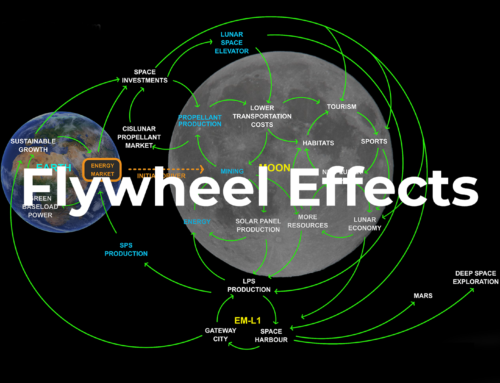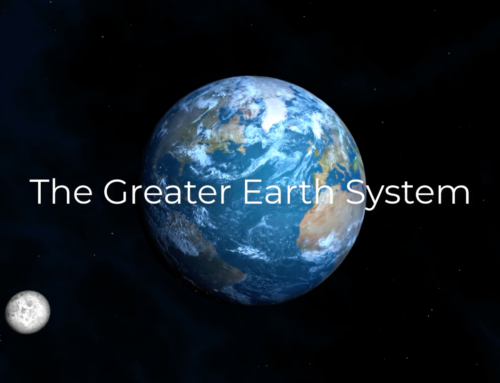Among all of nature’s diverse systems, energy is the principal driver of the increasing complexity of galaxies, stars, planets and life-forms in the expanding universe. Energy flows engendered largely by the expanding cosmos seem to be as universal as anything yet found in nature. Indeed, unlocking Earth’s vast energy reserves enabled our species to embark on an industrial revolution leading to a technological civilization that is on the threshold of expanding permanently into the near cosmos beginning with a permanent presence on Earth’s closest celestial neighbour– the Moon. However, Earth’s terrestrial energy reserves are finite and inadequate for this next stage of a cultural and societal evolution which would enable humanity to become a spacefaring species. Humanity is facing an imminent Energy Dilemma in that the limited proven reserves of fossil fuels could reach exhaustion levels at mid-century and none of the current terrestrial energy options – nuclear – wind – hydroelectric – ground solar (PV) – can be sufficiently scaled to achieve the goal of divesting from fossil fuels by the year 2050 as is being called for by the United Nations, the European Union, and numerous organizations to address the Climate Emergency. This also creates an opportunity, as the largest market on Earth is for energy, supplying inexhaustible and clean energy from space would be not only affordable but also immensely profitable.
Fig. 1 shows how economic and technological advances over the past 200 years have transformed how humanity produces and consumes energy. These transitions from one form of energy use to the next were driven by innovations like the steam engine, oil lamps, internal combustion engines, and the wide-scale use of electricity. The shift from a primarily agrarian global economy to an industrial one called for new sources to provide more efficient energy inputs [1]. The next energy transition will also rely on innovation in harnessing energy in space to meets the needs of humanity on Earth which cannot be met by terrestrial energy sources. This chart below makes the magnitude of the Energy Dilemma obvious.
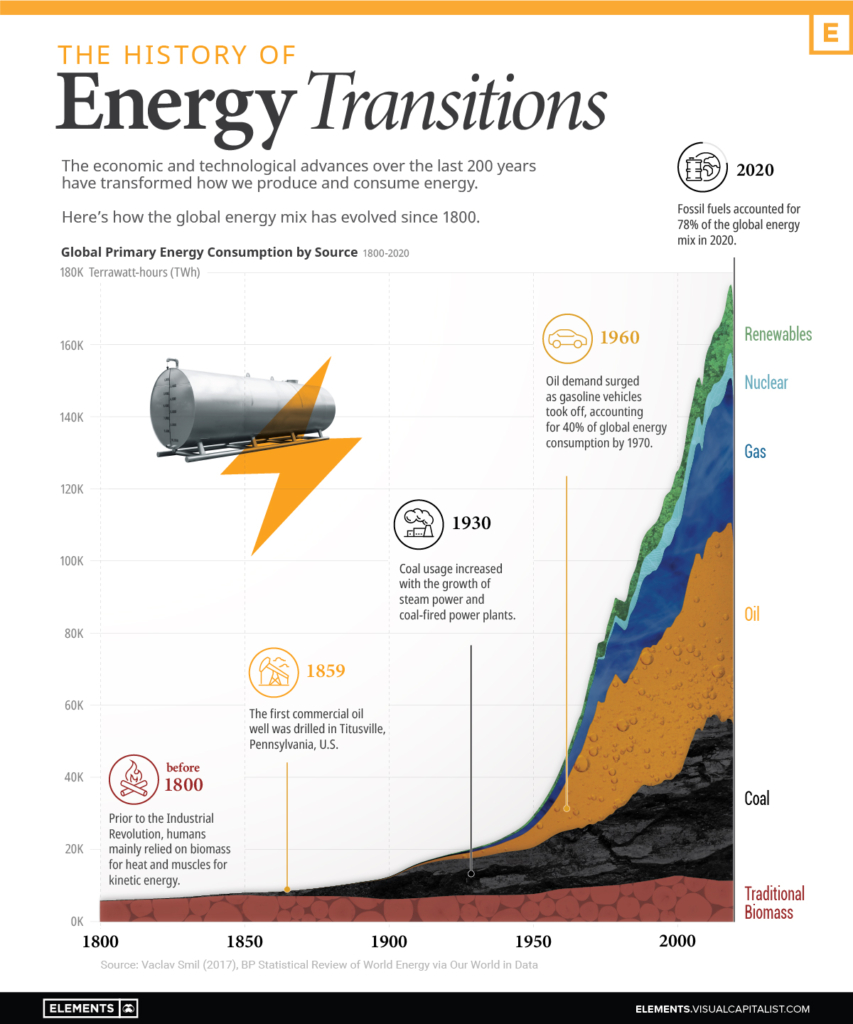
Figure 1: The History of Energy Transitions
Source https://elements.visualcapitalist.com/the-history-of-energy-transitions/
There are several sources of energy data available in order to have a picture of the world energy demands now and in the future. One commonly used is the BP Statistical Review of World Energy 2020 which in its 69th edition. This energy review lists World Primary Energy Consumption by fuel, i.e. oil, natural gas, coal, nuclear energy, hydroelectricity and renewables by region and country. [2] For 2019, Fig.2 shows the World Total Primary Energy consumption was: 583.90 EJ, combined Fossil Fuels coal, natural gas and oil: 492.34 EJ (Coal 157.86 EJ, Natural Gas 141.45 EJ Oil 193.03 EJ), Hydroelectricity: 37.66 Nuclear: 24.92 EJ, Renewables (wind, terrestrial solar and other non-hydro renewables) 28.98 EJ.
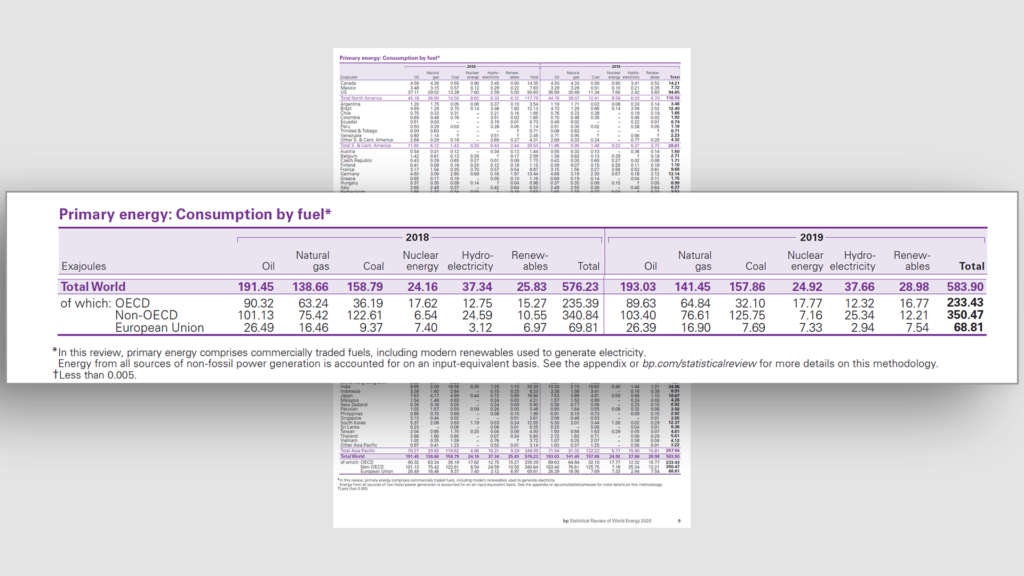
Figure 2: Extract from BP Statistical Review of World Energy
The BP report listed these in totals in exajoules (EJ) which, when converted to terawatt hours (TWh) results in the following figures:
- Total world energy consumption: 162,194 TWh
- Fossil Fuels: 136,761 TWh (84.3%)
- Hydroelectricity, 10,461 TWh (6.5%)
- Nuclear power, 6,922 TWh (4.3%)
- Renewables and other energy sources 8,050 TWh (5%)
This estimate of world energy consumption is confirmed by other sources such as the U.S. International Energy Agency [3] and Our World in Data [4].
Figure 3: Global primary energy consumption by source.
Hannah Ritchie, CC-BY, Our World in Data.
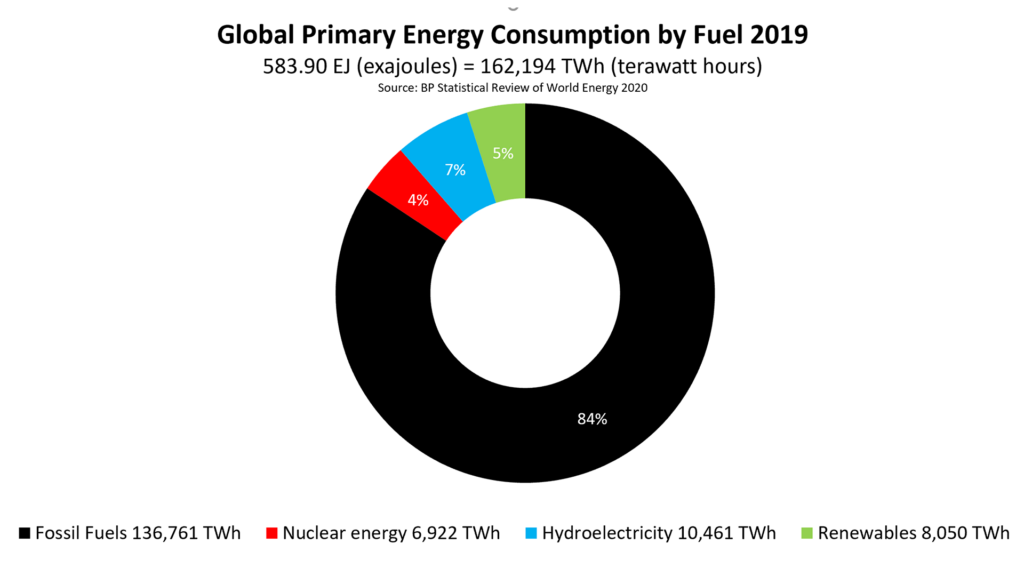
Figure 4: Global Primary Energy Consumption by Fuel in Terawatt Hours
As seen in Fig. 5 below, for Europe the figures were: total energy consumption 83.82 EJ = 23,283 TWh, combined fossil fuels 61.7 EJ = 17,139 TWh (73.6%), nuclear energy 8.28 EJ = 2,300 TWh (9.88%), hydroelectricity 5.66 EJ = 1,572 TWh (6.75%) and 8.18 = 2,272 TWh (9.76%) from renewables and other sources.

Figure 5 : Excerpt from the BP Statistical Review of World Energy 2020 – Europe
Studies, such as the one by the U.S Energy Information Agency [5], projects a nearly 50% increase in world energy use by 2050, led by growth in renewables as seen in Fig, 6.
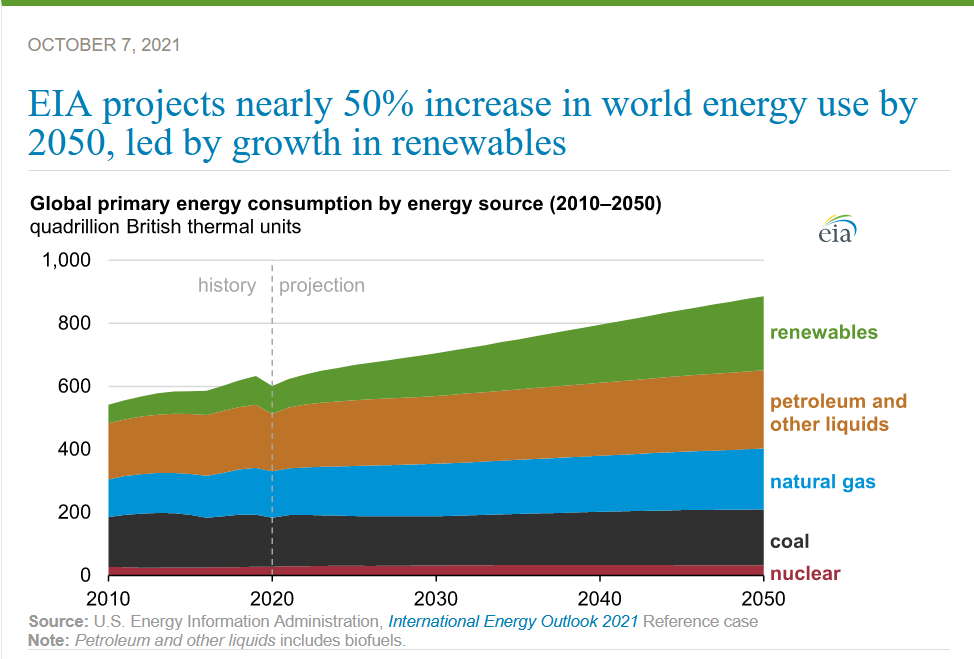
Figure 6: EIA, 50% increase in world energy use.
Source: U.S. Energy Information Administration (EIA) October 2021.
The following is an assessment of the energy consumption needs in Europe. Based on the BP Statistical Review of World Energy 2020 report mentioned above, in 2019 total energy consumption in Europe was 83.82 EJ or 23,283 TWh indicating a power level of 2,660 GW. A 50% increase would indicate that in the year 2050 a capacity of 3,990 GW will be needed, providing about 34,924 TWh/year.
Replacing Fossil Fuels with Terrestrial Energy Alternatives
To put this into context and using nuclear power as an example, to replace current world fossil fuel usage of 136,761 TWh with nuclear power (assuming a 90% availability) would require the deployment of up to 17,347 new 1 GW nuclear reactors. This means, for the next 30 years, 578 nuclear power plants would have to go online each year. In 2019, world-wide nuclear power systems accounted for only 6,922 TWh (4% of the total energy use) and, currently, building one nuclear power plant takes about 10 years.
For Europe, combined fossil fuel usage in 2019 was 17,139 TWh, using the same calculation as above, Europe would need 2,173 new 1-GW nuclear reactors to replace this amount of fossil fuel derived energy which translates into approximately 80 new nuclear reactors per year for the next 27 years.
Furthermore, some estimates conclude that the uranium reserves may supply the currently operating reactors only for some 90 years more [6]. In addition, there would not be enough suitable locations providing sufficient cooling for this many nuclear plants even if these could be built. Accordingly, a nuclear solution to divest from fossil fuels seems highly unlikely.
Terrestrial fusion nuclear power has been under development for more than 50 years. Among the dozen or so fusion projects around the world, the largest effort is the International Thermonuclear Experimental Reactor (ITER) which is a 35-nation effort under development since 1985 that hopes to have a commercially viable reactor by the year 2050. ITER’s first plasma reactor demonstration experiment that should produce a net energy gain of 500 MW from 50 MW of input heating power is scheduled for 2025. From the ITER website: “The ITER Tokamak and plant auxiliary systems will produce an average of 500 MW of heat during a typical plasma pulse cycle, with a peak of more than 1100 MW during the plasma burn phase; all of this heat needs to be dissipated to the environment” [7]. Thus, in addition to requiring geologically stable locations with sufficient access to cooling water where the substantial waste heat can be discharged into the local environment, scalable deployment of nuclear fusion faces the same obstacles as nuclear fission (17,347 new 1-GW reactors by the year 2050). Thus, nuclear fusion is also not a near term energy option.
Wind and solar photovoltaic (PV) generators have significantly lower availability: the inherent intermittency and storage aspects, make it necessary to deploy multiples of their equivalent rated (peak) power levels to equal the output, e.g., of nuclear power systems. For wind, the generating capacity needs to be some 3.35 times higher [8] and for PV, 6-7 times higher. Thus, to replace 2019 use of fossil fuels with wind and solar, no less than 65 TW (depending on the assumed wind/ PV mix) of power generating capacity from these two renewable sources would need to be installed. Again, this translates into 2 TW of electrical generating capacity from wind and solar to be installed every year from now until the year 2050 – i.e., 5 GW per day – and this, too, would have to start immediately.
Published data shows that the world’s installed wind power capacity reached 597 GW in 2018. [9] Installed world terrestrial solar PV capacity was 401 GW in 2017 [10] and is predicted to reach 530 GW by 2024 [11]. Thus, nuclear, wind, ground solar and other non-hydro renewables combined, contributed about 1.6 TW of current level of world energy consumption or approximately 8%.
With current world population of 7.7 billion expected to increase by 25% to 9.7 billion between now and 2050, at current energy consumption levels a very minimum of 23 TW (+25%) of power will be necessary to sustain civilization. However, based on the current average energy consumption increase of 1.5% per year, more likely humanity will require more than 30 TW of continuous power by mid-century.
Environmental Issues of Terrestrial Energy Alternatives
The major unresolved environmental problem associate with nuclear power generation is the creation of radioactive wastes such as uranium mill tailings, spent (used) reactor fuel, and other radioactive wastes [12] [13]. Sufficient cooling is also an issue as is the decommissioning process. These issues are in addition to the proliferation of nuclear weapons technology [14].
With regards to wind, while most elements of a wind turbine can be recycled or recommissioned, researchers estimate that over the next 20 years, the U.S. will have more than 720,000 tons of blade material which is a mix of resin and fiberglass to dispose of, a figure that does not ’t include newer, taller higher-capacity versions. As these used turbine blades do not have much value as scrap material, there is little commercial interest from recyclers [15] [16]. Other issues include unreliable and intermittent power generation, weather sensitivity, a lack of energy storage, land use, 20–25-year lifetime, low frequency amplitude modulation which is a problem for people living nearby, and the environmental impact on birds, bats and insects.
Likewise, terrestrial solar power generation is also unreliable and intermittent, energy efficiency is less than 25%, has the same energy storage issue as wind, is subject to dust and rain, the photovoltaic e manufacturing process uses toxic materials, extensive land use, waste disposal and recycling issues, and last, but not least, the thermal burden which dissipated excess heat is added to the environment.
The International Renewable Energy Agency (IRENA) estimated there was about 250,000 metric tons of solar panel waste in the world at the end of 2016. They predicted that this amount could reach 78 million metric tons by 2050 [17]. While solar generation is considered CO2-free, the manufacture of solar panels and related technologies can involve some environmentally unfriendly substances. Nitrogen trifluoride is a common byproduct of electronics manufacture; including those used in solar photovoltaics, and it is a greenhouse gas 17,000 times more potent than carbon dioxide. In addition, many photovoltaics include small amounts of the toxic metal cadmium, and the batteries required to store generated electricity can contain a host of other heavy metals and dangerous substances [18] [19].
Each of these terrestrial energy alternatives has various unresolved and specific environmental impact issues which are often overlooked when these are promoted as “green” solutions to humanity’s energy dilemma.
Fossil Fuels are Critically Finite
In addition to the many environmental and geopolitical issues associated with the continued use of fossil carbon fuels, the limited nature of these resources needs consideration. For instance, in Fig. 7 the “BP: World Reserves of Fossil Fuel” report shows that the remaining proven extractable reserves of fossil fuels are critically finite. At current rates of consumption, humanity will exhaust said reserves of crude oil by the year 2066, natural gas by 2068 and coal by 2169 [20]. Furthermore, EROI – energy return on investment – is also a critical issue for future production predictions as this will influence the price of fossil fuels as they become more difficult and thus less economical to produce. This aspect also significantly adds to the urgency of finding a viable alternative energy solution and underscores the imminent Energy Dilemma that humanity is facing.
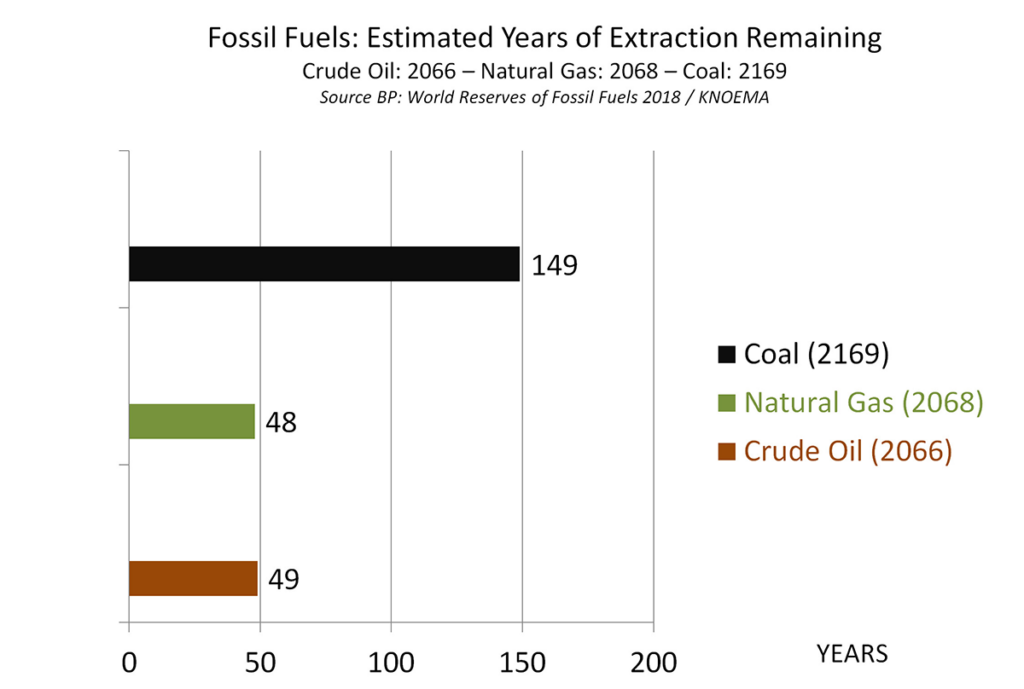
Figure 7: Estimated years of extraction remaining for fossil fuels.
Energy Security and Fossil Fuels
The Russia-Ukraine conflict has brought the issue of energy security to the headlines of the major media and to the governments around the world. Europe is heavily dependent on Russia for its fossil fuel needs. The European Union (not including the UK) imports 26.9 % of its crude oil, 46.7% of its coal and 41.1% of its natural gas from Russia. From 2000-2020 the EU-27 average country’s energy dependence has increased from 56.3% to 57.5%, meaning EU members became slightly more reliant on energy imports over those two decades [21].
Economic sanctions and geopolitical demands to punish Russia are designed to cancel this dependency by the end of 2022. In retaliation Russia has announced a ban on other goods and raw materials such as ammonium which is necessary for fertilizer production.
As a next step in this conflict, an EU oil embargo against Russia is looming. Oil import restrictions are said to be part of the sixth package of economic sanctions which also places a ban on the import of uranium and other nuclear technology from Russia.
The EU Commission is expected to present proposals to the member states in early May, 2022. Germany has so far been one of the brakes on oil sanctions, but, recently, the Scholz government appears to be in favour of a gradual embargo, say EU diplomats in Brussels. The main opponent to this embargo has been the Prime Minister of Hungary, Victor Orban while the main supporter has been the Polish government. As economic sanctions require unanimous consent of the EU member nations, a drawn-out transition period is anticipated.
As a result, European energy prices are skyrocketing, and Russia is demanding payment for its exports in Rubles which is yet another dimension to this conflict. This situation will have very negative effects on both businesses and consumers for years to come.
Economic Issues of Terrestrial Energy Alternatives
A stated above, 17,347 new 1-GW nuclear reactors would be necessary to replace current fossil fuel use. (Europe would need 2,173 new 1-GW nuclear reactors). To do this by year 2050, averagely 578 new 1-GW reactors would have to go online each year or 1.5 reactors each day. At a cost of $5 billion per 1-GW facility, the basic construction cost of these would be approximately $3 trillion per year or $87 trillion over a 30-year period. These estimates are probably underestimated as seen in the two examples below of nuclear power plants currently under construction.
- Hinkley Point C nuclear power station – a 3.2 GW facility in Great Britain that is expected to eventually cost £22.5 billion ($29 billion) [22]
- Flamanville in Manche, France begun in 2007 – 1.6 GW facility is now expected to eventually cost €12.4 billion ($14 billion) [23]
Using these examples, the average cost is approximately $9 billion per GW to construct a nuclear power plant today. This amount is based on what is referred to as the Engineering, Procurement and Construction costs or EPC. The EPC for a 1-GW nuclear power plant will be used in comparison to the cost of constructing and launching a 1-GW SPS. At $9 billion per 1-GW nuclear power plant the above 30 Year cost estimate becomes $160 trillion. Not included in this estimate are the costs of financing, cost of fuel, nuclear waste disposal, regulations, operations and decommissioning which would further significantly impact this cost.
With government initiatives, policies, subsidies and mass-production factors, the reported cost of building wind and solar electrical generation plants is now considered comparable to that of building new coal or nuclear capacity. Of course, when these governmental factors expire or are removed then the real costs of the competing energy technologies may be realistically compared.
There is a complex method proposed by the US Energy Information Administration (EIA) to make these comparisons. Referred to as the levelized cost of electricity (LCOE) and levelized avoided cost of electricity (LACE) these are, respectively, estimates of the revenue required to build and operate a generator over a specified cost recovery period and the revenue available to that generator over the same period. The LCOE / LACE comparisons in Fig. 8. are from their publication Levelized Cost and Levelized Avoided Cost of New Generation Resources in the Annual Energy Outlook 2020. [24]

Figure 8: Levelized Cost and Levelized Avoided Cost of New Generation Resources
Source: U.S. Energy Information Administration (EIA) February 2020.
Market shocks may cause a divergence between LCOE and LACE and therefore disturb the market equilibrium. These market shocks include technology change, policy developments, fuel price volatility, geopolitical conflicts such as the war in Ukraine, or, as experienced with the SARS2-COV-2 global health pandemic, that can increase or decrease the value-cost ratio of any given technology.
However, even if one accepts that the cost terrestrial renewable energy production has now reached parity with coal and nuclear power production, an increase in energy demand from 2020 to 2050 must also be considered. World population is expected to increase to 9.7 billion by 2050. As mentioned above, the U.S. Energy Information Agency projects nearly 50% increase in world energy use by 2050. These economic considerations add to the problem of scaling terrestrial energy options to meet the energy needs of humanity while concurrently divesting from fossil fuels which are finite.
Conclusion
This is the Energy Dilemma that Europe and the world is facing. If implemented in time to make a difference, clean and inexhaustible energy from space delivered to the surface of Earth 365/24/7, would seem to be the ideal solution to this dilemma. One or more prototype systems could be put into operation with the use of just 1% of the funds being spent on renewable energy systems. Even allowing for uncertainty, this additional use of clean energy budgets would be very cost-effective.
References:
- Govind Bhutada, (2022) Visualizing the History of Energy Transitions, Virtual Capitalist, April 8, 2022
https://www.visualcapitalist.com/visualizing-the-history-of-energy-transitions/ Accessed 29.4.2022 - BP Statistical Review of World Energy 2020, 69th edition
https://www.bp.com/content/dam/bp/business-sites/en/global/corporate/pdfs/energy-economics/statistical-review/bp-stats-review-2020-full-report.pdf - IEA, World Energy Report 2019, Launch Presentation, Page 4, https://www.iea.org/media/publications/weo/WEO2019-Launch-Presentation.PDF (N/A) https://thespaceoption.com/PDF/IEA-World_Energy_Outlook_2019_Launch_Presentation.pdf
- Our World in Data: Global primary energy consumption by source. https://ourworldindata.org/energy-mix Accessed 29.4.2022
- U.S. Energy Information Agency, (EIA) Today in Energy, EIA projects nearly 50% increase in world energy use by 2050, led by growth in renewables, October 7, 2021 https://www.eia.gov/todayinenergy/detail.php?id=49876 Accessed 27.4.2022
- Supply of Uranium, World Nuclear Association, August 2019
https://www.world-nuclear.org/information-library/nuclear-fuel-cycle/uranium-resources/supply-of-uranium.aspx Accessed 10.3.2020 - ITER website, Cooling Water System, https://www.iter.org/mach/CoolingWater Accessed 12.4.2020
- Land Needs for Wind, Solar Dwarf Nuclear Plant’s Footprint, Nuclear Energy Institute https://www.nei.org/news/2015/land-needs-for-wind-solar-dwarf-nuclear-plants Accessed 10.3.2020
- Wind Power Capacity Worldwide Reaches 597 GW, 50.1 GW added in 2018, WWEA https://wwindea.org/blog/2019/02/25/wind-power-capacity-worldwide-reaches-600-gw-539-gw-added-in-2018/ Accessed 10.3.2020
- Growth of Photovoltaics, Wikipedia,
https://en.wikipedia.org/wiki/Growth_of_photovoltaics#Worldwide Accessed 10.3.2020 - Renewables 2019, Distributed Solar PV, IEA
https://www.iea.org/reports/renewables-2019/distributed-solar-pv Accessed 10.3.2020 - Nuclear explained: Nuclear power and the environment, EIA U.S. Energy Information Administration, https://www.eia.gov/energyexplained/nuclear/nuclear-power-and-the-environment.php Accessed 24.4.2020
- Nuclear Power, William Martin, Encyclopedia Britannica, https://www.britannica.com/technology/nuclear-power#ref1177714 Accessed 10.3.2020
- Nuclear proliferation, Encyclopedia Britannica, https://www.britannica.com/topic/nuclear-proliferation Accessed 24.4.2020
- Unfurling The Waste Problem Caused By Wind Energy, NPR, https://www.npr.org/2019/09/10/759376113/unfurling-the-waste-problem-caused-by-wind-energy Accessed 24.4.2020
- Can Wind Turbines Be Recycled?, Earth911, https://earth911.com/business-policy/wind-turbines-recycle/ Accessed 24.4.2020
- If Solar Panels Are So Clean, Why Do They Produce So Much Toxic Waste?, Forbes, https://www.forbes.com/sites/michaelshellenberger/2018/05/23/if-solar-panels-are-so-clean-why-do-they-produce-so-much-toxic-waste/#3c2bebf1121c Accessed 24.4.2020
- End-of-life management: Solar Photovoltaic Panels, IRENA, https://www.irena.org/publications/2016/Jun/End-of-life-management-Solar-Photovoltaic-Panels Accessed 24.4.2020
- Future of Solar Power: Obstacles & Problems, Sciencing.com, https://sciencing.com/future-solar-power-obstacles-problems-21852.html Accessed 24.4.2020
- BP: World Reserves of Fossil Fuels, 2018 Knoema Data Published: 30 July 2018 https://knoema.com/infographics/smsfgud/bp-world-reserves-of-fossil-fuels
Accessed 10.3.2020 - Virtual Capitalist, Visualizing the EU’s Energy Dependence, March 22, 2022
https://www.visualcapitalist.com/visualizing-the-eus-energy-dependency/ Accessed 27.4.2022 - Hinkley Point nuclear plant building costs rise by up to £2.9bn
https://www.theguardian.com/uk-news/2019/sep/25/hinkley-point-nuclear-plant-to-run-29m-over-budget Accessed 24.5.2020 - EDF warns of added costs of Flamanville EPR weld repairs. World Nuclear News, http://world-nuclear-news.org/Articles/EDF-warns-of-added-costs-of-Flamanville-EPR-weld-r Accessed 24.5.2020
- Levelized Cost and Levelized Avoided Cost of New Generation Resources in the Annual Energy Outlook 2020, EIA, U.S. Energy Information Administration
https://www.eia.gov/outlooks/aeo/pdf/electricity_generation.pdf Accessed 24.5.2020


